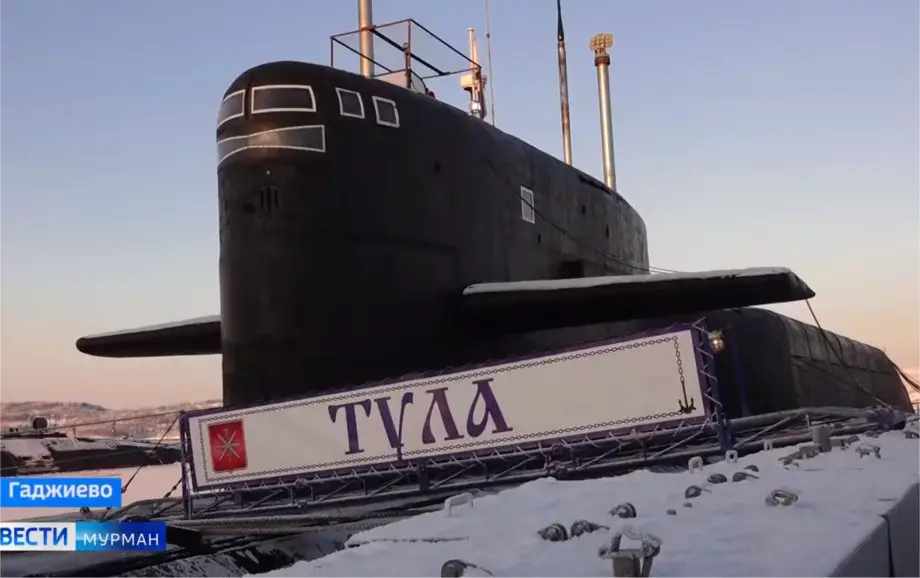Russian Submarines Equipped with “Cope Cage” Amid Fears of Kamikaze and FPV Drone Attacks
The use of the "cope cage" on submarines reflects a growing concern over kamikaze and FPV (First Person View) drone attacks, a worry that extends beyond tank and armored vehicle crews to also include Russian submarine crews.
(DEFENCE SECURITY ASIA) — The “cope cage” is not only used by tanks and armored vehicles to defend against kamikaze drone attacks but has now also been employed on Russian nuclear-powered submarines, which are similarly equipped with the “cope cage.”
The use of the “cope cage” on submarines reflects a growing concern over kamikaze and FPV (First Person View) drone attacks, a worry that extends beyond tank and armored vehicle crews to also include Russian submarine crews.
Screenshots from a video shared by a Russian television station show the cope cage installed on the tower section of the involved submarine.
The crew of the nuclear-powered submarine “Tula” from the Delta IV class might fear becoming targets of drone attacks, especially when docked at any base, particularly in Crimea in the Black Sea.
However, the Delta IV-class submarine is based in Gadzhiyevo, located in the Murmansk region, and is part of the Russian Northern Fleet.
It is situated more than 1,000 km away from the conflict frontline in Ukraine and is likely beyond the reach of Kiev’s kamikaze drone capabilities.

Alternatively, the iron structure of the cope cage may be a precautionary measure before the nuclear-powered submarine “Tula” from the Delta IV class is deployed for duty in the Black Sea.
The “Tula” submarine of the Delta IV class has a total weight of 15,500 tons and is equipped with 16 ballistic guided missiles, the R-29RMU Sineva.
There is also speculation that the iron structure placed on the tower section of the Russian nuclear-powered submarine is not a cope cage to thwart drone attacks but rather a structure to block sunlight exposure when docked.
Nevertheless, it marks the first instance of a cope cage being used by naval platforms, indicating that kamikaze drone or FPV (First Person View) drone attacks are increasingly becoming threats to all military assets and platforms.


Recently, Ukraine has escalated its kamikaze drone attacks on Russian military and civilian infrastructure, including oil refinery facilities deep within its territory.
Ukraine’s drone attacks on Russia’s main naval base in the Black Sea are intensifying, resulting in the destruction of Russian naval assets, including warships.
This underscores the expanding reach of Ukraine’s kamikaze drones and likely concerns senior Russian military officials regarding the safety of their assets, even when thousands of kilometers away from the frontline. — DSA



Comments are closed.